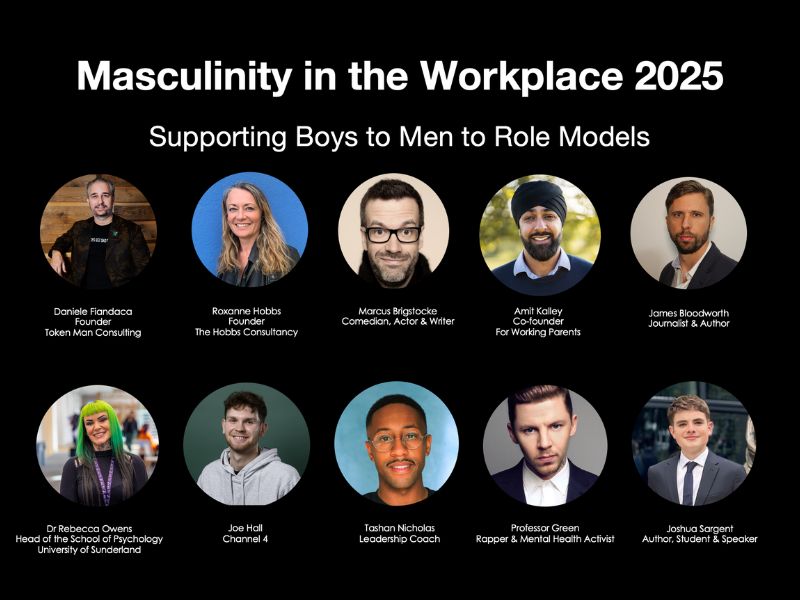 Catherine Garrod is a distinguished mental health speaker and inclusion expert who transforms the way organisations understand and embed wellbeing and belonging into everyday operations.
Catherine Garrod is a distinguished mental health speaker and inclusion expert who transforms the way organisations understand and embed wellbeing and belonging into everyday operations.
As the founder of Compelling Culture, she has led Sky to be named the Most Inclusive Employer in the UK, steered major change in HR and people strategy, and advised clients like Bupa and Dentsu.
Her mission is to make inclusion “doable” — weaving it into decisions, systems and culture rather than treating it as a standalone initiative.
In this exclusive interview with The Mental Health Speakers Agency, Catherine Garrod reveals how leaders can strengthen mental health, foster belonging, and design organisations where everyone feels valued.
From your experience, what practical steps can organisations take to embed inclusion into their core operations rather than treating it as a standalone initiative?
I think it’s embedding inclusion into the way that the organisation operates. It’s not just about people’s everyday behaviours when they’re interacting with colleagues or customers or service users, but it’s also about looking at policies, processes, and systems.
Everything everyone’s doing in their day-to-day work or their interactions should already have inclusion weaved into it, so that inclusion comes by design rather than through activity or programme-based initiatives.
To check that this is working, the other big thing organisations need to do is use data. Whatever success looks like for that organisation – whether externally or internally – what are the differences in experience for people from underrepresented and over-represented groups?
If there are big gaps, what then are the actions determined to close those gaps? That’s really when an organisation starts to see progress.
In your view, what distinguishes truly high-performing teams in today’s workplace, particularly when it comes to fostering open dialogue and psychological safety?
People talk a lot about psychological safety, but to give a more simplistic term, I think it’s about feeling safe to express an alternative opinion as long as it’s respectful. It should be safe to respectfully disagree with each other, to offer an alternative perspective, or to share a life experience without people laughing or dismissing your viewpoint.
That way, people are learning from the collective experiences and observations of each other. If you’re working in a team where people have similar experiences – whether due to industry, demographics, or age – you need to deliberately seek alternative perspectives from those who are not just like the people in the room.
The underpinning factor is understanding that you don’t know everything and never will. If there are five people in a meeting or eight people in a team, think about where else you can learn and what perspectives you can bring in before making final decisions.
Your book Conscious Inclusion: How to ‘Do’ EDI One Decision at a Time offers a hands-on approach to equity and inclusion. What inspired you to write it, and how does it differ from traditional DEI frameworks?
I see the same challenges in every single business. There’s tons of commitment, passion, and enthusiasm – people intellectually get it and want the world to be fairer, but they don’t always know how.
I often see overinvestment in events, communications, or activities, maybe a few policy changes or adjustments to advertising, but rarely the confidence in how to truly embed inclusion into how the organisation operates.
So, I wanted to put something practical out into the world that shows what to do and how to do it. It’s a practical user manual that walks through steps from leadership, HR, operations, and wider impact perspectives.
I also wanted to challenge the idea that inclusion “must be led from the top”. I believe anyone, in any job, can make an organisation more inclusive. My goal was to create something useful for boards, trustees, exec teams, and also individuals who simply care and want to do their work better.
Many leaders struggle to move from intention to impact in DEI. What actionable strategies would you recommend for organisations looking to meaningfully advance equity, diversity, and inclusion?
The first thing is to start with inclusion. If you break inclusion down, everyone wants to be valued, heard, and involved. Don’t rush off and focus on diversity until you’ve really understood what inclusion looks like and whether people feel included.
Once you’ve built that foundation, look at diversity – the layers of your organisation, marketing, and product development – and understand who you are appealing to, and who you aren’t. Use data to uncover differences between groups.
Often, overall metrics hide the experiences of smaller groups. So, start with inclusion, identify who’s missing, and use data to guide meaningful action.
During your time at Sky, you led the company to be recognised as the UK’s most inclusive employer. What lessons can other businesses learn from that success story?
Listening is the biggest thing. When I was at Sky, there were 24,000 employees, and I was one of two people leading that work – it felt terrifying at first. But I quickly learned I wasn’t the only one who cared. There were many others passionate about it, networks already in place, and initiatives happening both internally and on screen.
So, find others who care, listen, learn, and seek external expertise too – benchmarks, partnerships, and guidance. Ultimately, create frameworks that give people enough flexibility and freedom to be creative and autonomous. When you do that, people often go further than you ever imagined possible.
As the world of work continues to evolve, what do you believe the future workplace will look like — and how can organisations prepare to remain inclusive and relevant?
We’re living through a fascinating period that future generations will study. The organisations that stay relevant will be those that understand and address the different needs of various demographics. People increasingly want their work to have purpose and meaning – to make an impact, whether on people or the planet.
Inclusion and sustainability are becoming more intertwined, both as part of people’s jobs and their personal passions. Leaders today need to think about what future generations will say about them 100 years from now.
For leaders who genuinely want to build inclusive organisations but fear ‘getting it wrong’, what advice would you give to help them act with confidence and authenticity?
Invest and be serious about it. If you want your organisation to be consciously inclusive, you need a strategy, measures of success, and good data to track what’s working and what’s not. Fear of getting it wrong is common, but courage and vulnerability are essential. Try, make mistakes, take feedback gracefully, and keep going.
If people see that you’re genuinely committed to learning and improving, they’ll forgive mistakes quickly. Help people understand how inclusion connects to their work – if even 20% of your team does that, the world becomes 20% better.
This exclusive interview with Catherine Garrod was conducted by Megan Lupton of The Motivational Speakers Agency.










